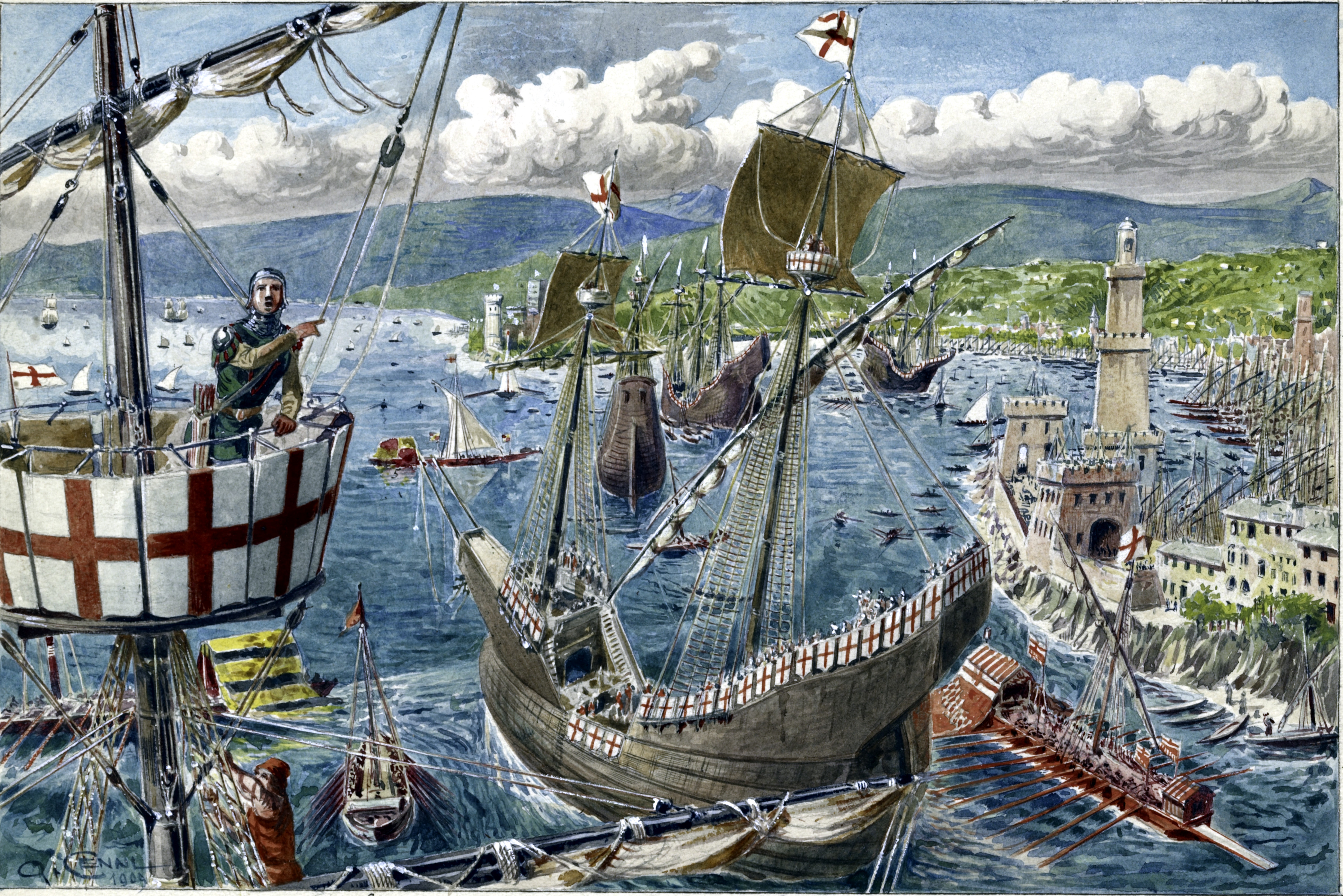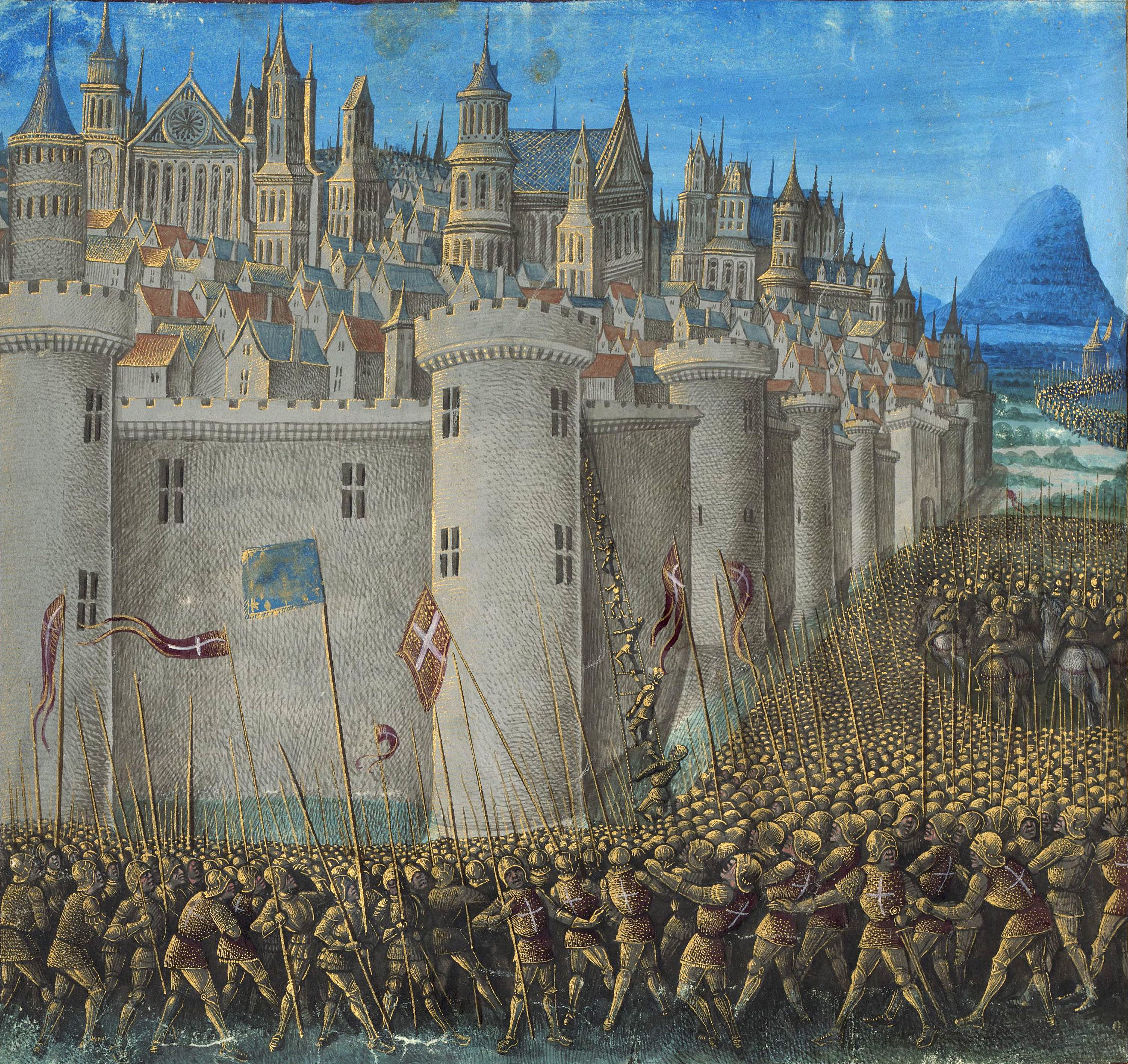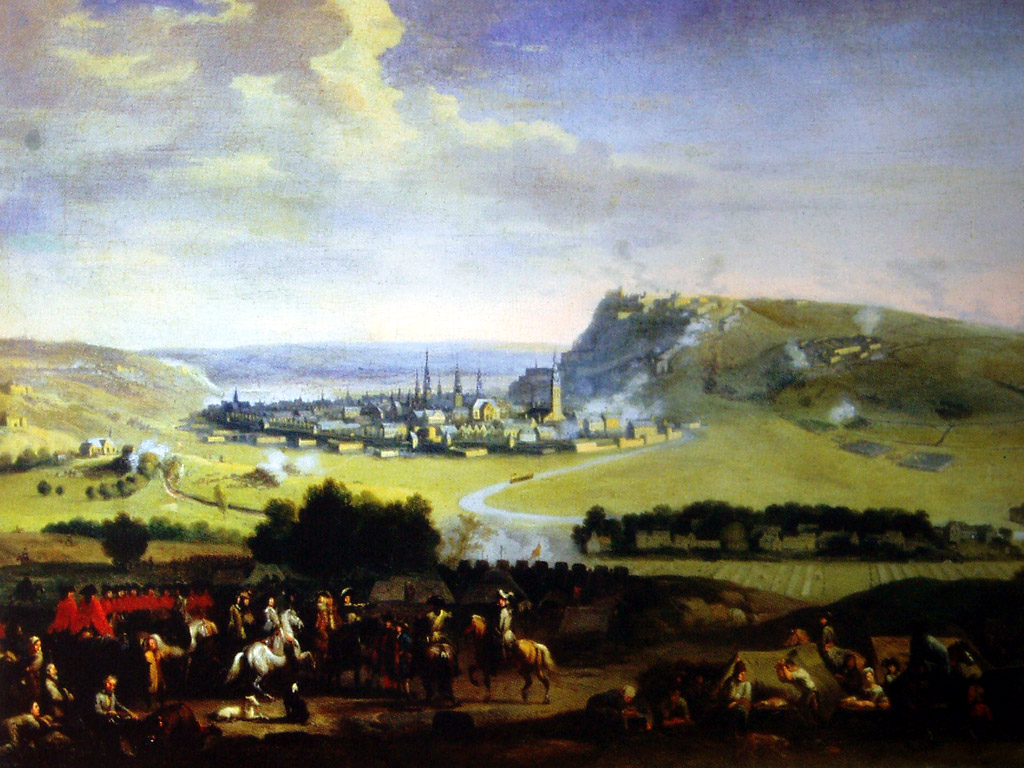|
Francesco Maria Della Rovere
Francesco Maria Della Rovere (Genoa, 13 February 1695 - Genoa, 23 May 1768) was the 168th Doge of the Republic of Genoa, the last member of the Genoese branch of the Della Rovere family. Biography During his mandate as Doge of Genoa, he commissioned new conservation and restoration works for the Doge's Palace, the residence of the doge in charge and seat of political power for the presence of the Major and Minor Council of the Republic of Genoa. He also maintained good relations with the Holy See in Rome and also thanks to his Roman knowledge he favored the cardinal election of the Genoese Nicolò Serra and Lazzaro Pallavicini. When the dogal office ended on 29 January 1767, Francesco Maria Della Rovere died in Genoa on 23 May 1768. Having had no children from his wife Caterina Negrone, daughter of the former doge Domenico Negrone, the Genoese noble branch of the Della Rovere family went extinct. See also * Republic of Genoa * Doge of Genoa The Doge of Genoa ( lij, D� ... [...More Info...] [...Related Items...] OR: [Wikipedia] [Google] [Baidu] |
Doge Of Genoa
The Doge of Genoa ( lij, Dûxe, ; la, Januensium dux et populi defensor, "Commander of the Genoese and Defender of the People") was the ruler of the Republic of Genoa, a city-state and soon afterwards a maritime republic, from 1339 until the state's extinction in 1797. Originally elected for life, after 1528 the Doges were elected for terms of two years. The Republic (or Dogate) was ruled by a small group of merchant families, from whom the doges were selected. History The first Doge of Genoa, Simone Boccanegra ( Ligurian: ''Scimón Boccanéigra''), whose name is kept alive by Verdi's opera, was appointed by public acclaim in 1339. Initially the Doge of Genoa was elected without restriction and by popular suffrage, holding office for life in the so-called "perpetual dogate"; but after the reform effected by Andrea Doria in 1528 the term of his office was reduced to two years. At the same time plebeians were declared ineligible, and the appointment of the doge w ... [...More Info...] [...Related Items...] OR: [Wikipedia] [Google] [Baidu] |
Rodolfo Emilio Brignole Sale
Rodolfo Emilio Brignole Sale, marquis of Groppoli (Genoa, 27 June 1708 - Genoa, 18 April 1774), was the 167th Doge of the Republic of Genoa from 25 November 1762 to 25 November 1764. Biography He is the fourth and last son of Anton II Giulio Brignole Sale and Isabella Brignole, as well as younger brother of Giovanni Francesco II Brignole Sale, doge from 1746 to 1748 . He is the uncle of the Princess of Monaco and then of Condé Maria Caterina Brignole. Officially crowned with a solemn ceremony of 16 April 1763 at the Genoa Cathedral, in the mandate of the doge Rodolfo Brignole Sale the first institution of free schools for the poorest children of the city was approved, whose education was entrusted to some priests. After the Doge's two-year period, on 25 November 1764, Rodolfo Brignole Sale returned to stay in his palace in the historic center. He served the state again with the position of head of the War Magistrate and head of the State Inquisitors Magistrate. Brignole Sal ... [...More Info...] [...Related Items...] OR: [Wikipedia] [Google] [Baidu] |
Marcello Durazzo (Doge Of Genoa)
Marcello Durazzo (Genoa, 1710 - Genoa, December 1791) was the 169th Doge of the Republic of Genoa. Biography On February 3, 1767 Durazzo became Doge of Genoa. His Dogate was marked by the definitive loss of the island of Corsica to France, in the Treaty of Versailles. On February 3, 1769, he ended his Dogate and later became head of the war magistrate and state inquisitors. Then Durazzo became deputy for the works of the Port of Savona and had the fort of Vado built, always on a personal design, which was then called Forte Marcello in his honor. Until 1791 he had three positions: protector of the " Jewish nation", magistrate of the Worship and protector of the Holy Office. Durazzo died in Genoa in December 1791 at 81 years old. See also * Republic of Genoa * Doge of Genoa * Durazzo family The Durazzo Family is a noble Italian family of Albanian origin who came from the city of Durrës in Albania. The Durazzo family assisted the Republic of Genoa on the development o ... [...More Info...] [...Related Items...] OR: [Wikipedia] [Google] [Baidu] |
Genoa
Genoa ( ; it, Genova ; lij, Zêna ). is the capital of the Regions of Italy, Italian region of Liguria and the List of cities in Italy, sixth-largest city in Italy. In 2015, 594,733 people lived within the city's administrative limits. As of the 2011 Italian census, the Province of Genoa, which in 2015 became the Metropolitan City of Genoa, had 855,834 resident persons. Over 1.5 million people live in the wider metropolitan area stretching along the Italian Riviera. On the Gulf of Genoa in the Ligurian Sea, Genoa has historically been one of the most important ports on the Mediterranean Sea, Mediterranean: it is currently the busiest in Italy and in the Mediterranean Sea and twelfth-busiest in the European Union. Genoa was the capital of Republic of Genoa, one of the most powerful maritime republics for over seven centuries, from the 11th century to 1797. Particularly from the 12th century to the 15th century, the city played a leading role in the commercial trade in Euro ... [...More Info...] [...Related Items...] OR: [Wikipedia] [Google] [Baidu] |
Republic Of Genoa
The Republic of Genoa ( lij, Repúbrica de Zêna ; it, Repubblica di Genova; la, Res Publica Ianuensis) was a medieval and early modern maritime republic from the 11th century to 1797 in Liguria on the northwestern Italian coast. During the Late Middle Ages, it was a major commercial power in both the Mediterranean Sea and the Black Sea. Between the 16th and 17th centuries it was one of the major financial centers in Europe. Throughout its history, the Genoese Republic established numerous colonies throughout the Mediterranean and the Black Sea, including Corsica from 1347 to 1768, Monaco, Southern Crimea from 1266 to 1475 and the islands of Lesbos and Chios from the 14th century to 1462 and 1566 respectively. With the arrival of the early modern period, the Republic had lost many of its colonies, and had to shift its interests and focus on banking. This decision would prove successful for Genoa, which remained as one of the hubs of capitalism, with highly developed ban ... [...More Info...] [...Related Items...] OR: [Wikipedia] [Google] [Baidu] |
Della Rovere
The House of Della Rovere (; literally "of the oak tree") was a noble family of Italy. It had humble origins in Savona, in Liguria, and acquired power and influence through nepotism and ambitious marriages arranged by two Della Rovere popes: Francesco Della Rovere, who ruled as Sixtus IV from 1471 to 1484) and his nephew Giuliano, who became Julius II in 1503. Sixtus IV built the Sistine Chapel, which is named for him. The Basilica of San Pietro in Vincoli in Rome is the family church of the Della Rovere. Members of the family were influential in the Church of Rome, and as dukes of Urbino; that title was extinguished with the death of Francesco Maria II in 1631, and the family died out with the death of his granddaughter Vittoria, Grand Duchess of Tuscany. History Francesco Della Rovere was born into a poor family in Liguria in north-west Italy in 1414, the son of Leonardo della Rovere of Savona. He was elected pope in 1471. As Sixtus IV he was both wealthy and powerful ... [...More Info...] [...Related Items...] OR: [Wikipedia] [Google] [Baidu] |
Doge's Palace, Genoa
The Doge's Palace (Italian: ''Palazzo Ducale'') is a historical building in Genoa, northern Italy. Once the home of the Doges of Genoa, it is now a museum and a centre for cultural events and arts exhibitions. It is situated in the heart of the city, with two different entrances and façades, the main one on Piazza Giacomo Matteotti, and the second one on Piazza De Ferrari. History The construction of the Doge's Palace began at the end of the 13th century, when Genoa was gradually consolidating its military and economic power in the Mediterranean. At that time the city was organized according as the "Compagna Communis" (the official name of the Republic in the time), which provided for the appointment of the Capitano del popolo, as the head of state of Genoa. Until 1291, however, the highest officials and other representatives of the Municipality did not have their own headquarters but were housed in the Archbishop's Palace, or in nearby private homes belonging to the Doria a ... [...More Info...] [...Related Items...] OR: [Wikipedia] [Google] [Baidu] |
Holy See
The Holy See ( lat, Sancta Sedes, ; it, Santa Sede ), also called the See of Rome, Petrine See or Apostolic See, is the jurisdiction of the Pope in his role as the bishop of Rome. It includes the apostolic episcopal see of the Diocese of Rome, which has ecclesiastical jurisdiction over the Catholic Church and the sovereign city-state known as the Vatican City. According to Catholic tradition it was founded in the first century by Saints Peter and Paul and, by virtue of Petrine and papal primacy, is the focal point of full communion for Catholic Christians around the world. As a sovereign entity, the Holy See is headquartered in, operates from, and exercises "exclusive dominion" over the independent Vatican City State enclave in Rome, of which the pope is sovereign. The Holy See is administered by the Roman Curia (Latin for "Roman Court"), which is the central government of the Catholic Church. The Roman Curia includes various dicasteries, comparable to ministries and ... [...More Info...] [...Related Items...] OR: [Wikipedia] [Google] [Baidu] |
Rome
, established_title = Founded , established_date = 753 BC , founder = King Romulus ( legendary) , image_map = Map of comune of Rome (metropolitan city of Capital Rome, region Lazio, Italy).svg , map_caption = The territory of the ''comune'' (''Roma Capitale'', in red) inside the Metropolitan City of Rome (''Città Metropolitana di Roma'', in yellow). The white spot in the centre is Vatican City. , pushpin_map = Italy#Europe , pushpin_map_caption = Location within Italy##Location within Europe , pushpin_relief = yes , coordinates = , coor_pinpoint = , subdivision_type = Country , subdivision_name = Italy , subdivision_type2 = Regions of Italy, Region , subdivision_name2 = Lazio , subdivision_type3 = Metropolitan cities of Italy, Metropolitan city , subdivision_name3 = Metropolitan City of Rome Capital, Rome Capital , government_footnotes= , government_type = Mayor–council gover ... [...More Info...] [...Related Items...] OR: [Wikipedia] [Google] [Baidu] |
Domenico Negrone
Domenico Negrone (Genoa, 1672 - Genoa, 1736) was the 147th Doge of the Republic of Genoa and king of Corsica. Biography Negrone's election as doge of the Republic of Genoa took place on 13 October 1723, the one hundred and second in two-year succession and the one hundred and forty-seventh in republican history. As doge he was also invested with the related biennial office of king of Corsica. In his mandate the doge Negrone decreed a 10% increase in taxes on goods coming from the Grand Duchy of Tuscany The Grand Duchy of Tuscany ( it, Granducato di Toscana; la, Magnus Ducatus Etruriae) was an Italian monarchy that existed, with interruptions, from 1569 to 1859, replacing the Republic of Florence. The grand duchy's capital was Florence. In th ..., a measure already implemented during the slate of the predecessor Cesare De Franchi Toso which already caused a collapse of commercial traffic and which, in a tight turn, was consequently canceled. He ended the Dogate on Oct ... [...More Info...] [...Related Items...] OR: [Wikipedia] [Google] [Baidu] |
18th-century Doges Of Genoa
The 18th century lasted from January 1, 1701 ( MDCCI) to December 31, 1800 ( MDCCC). During the 18th century, elements of Enlightenment thinking culminated in the American, French, and Haitian Revolutions. During the century, slave trading and human trafficking expanded across the shores of the Atlantic, while declining in Russia, China, and Korea. Revolutions began to challenge the legitimacy of monarchical and aristocratic power structures, including the structures and beliefs that supported slavery. The Industrial Revolution began during mid-century, leading to radical changes in human society and the environment. Western historians have occasionally defined the 18th century otherwise for the purposes of their work. For example, the "short" 18th century may be defined as 1715–1789, denoting the period of time between the death of Louis XIV of France and the start of the French Revolution, with an emphasis on directly interconnected events. To historians who expand ... [...More Info...] [...Related Items...] OR: [Wikipedia] [Google] [Baidu] |
1695 Births
It was also a particularly cold and wet year. Contemporary records claim that wine froze in the glasses in the Palace of Versailles. Events January–March * January 7 (December 28, 1694 O.S.) – The United Kingdom's last joint monarchy, the reign of husband-and-wife King William III and Queen Mary II comes to an end with the death of Queen Mary, at the age of 32. Princess Mary had been installed as the monarch along with her husband and cousin, Willem Hendrik von Oranje, Stadtholder of the Dutch Republic, in 1689 after King James II was deposed by Willem during the "Glorious Revolution". * January 14 (January 4 O.S.) – The Royal Navy warship HMS ''Nonsuch'' is captured near England's Isles of Scilly by the 48-gun French privateer ''Le Francois''. ''Nonsuch'' is then sold to the French Navy and renamed ''Le Sans Pareil''. * January 24 – Milan's Court Theater is destroyed in a fire. * January 27 – A flotilla of six Royal Navy warships under the command of C ... [...More Info...] [...Related Items...] OR: [Wikipedia] [Google] [Baidu] |



